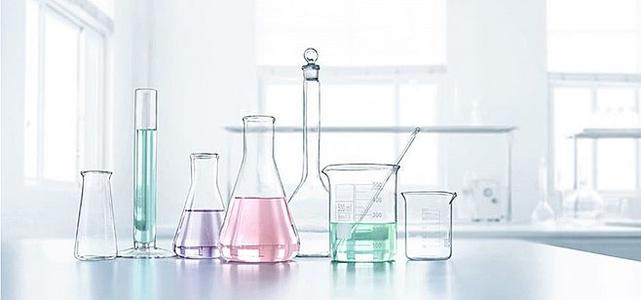扫一扫 添加小助手
服务热线
13818320332
扫一扫 关注我们
 11月11日,世界卫生组织(WHO)发布了“研究和开发设施的良好实践” 指南(Good practices for research and development facilities)的征求意见稿。WHO指出,就开发批、中试批生产以及相应的稳定性数据,目前没有相关的法规指南对稳定性、工艺验证和分析方法的开发和验证提出具体要求,因此开发本文件非常有必要。本文件为研发机构提供了有关GMP方面的指南,目的是确保遵循正确的系统,保证产品、工艺、程序和数据的适当性、可靠性和质量。
11月11日,世界卫生组织(WHO)发布了“研究和开发设施的良好实践” 指南(Good practices for research and development facilities)的征求意见稿。WHO指出,就开发批、中试批生产以及相应的稳定性数据,目前没有相关的法规指南对稳定性、工艺验证和分析方法的开发和验证提出具体要求,因此开发本文件非常有必要。本文件为研发机构提供了有关GMP方面的指南,目的是确保遵循正确的系统,保证产品、工艺、程序和数据的适当性、可靠性和质量。

本指南主体部分分为22个章节,内容如下:
1.背景
2.简介
3.范围
4.质量管理
5.质量风险管理
6.卫生
7.确认与验证
8.外包活动
9.自检和质量审计
10.人员
11.培训
12.设施
13.设备和仪器
14.物料
15.文档
16.加工和工艺验证
17.质量控制
18.稳定性研究
19.分析程序的制定
20.技术转移
21.生命周期方法
22.清洁程序的开发和清洁验证
以下是该指南的15-16章的内容:
15. 文档
Documentation
15.1. Documentation includes specifications and procedures for materials and methods of production and control. The design and use of documents depend upon the research and development facility. The scope and extent should be established based on risk assessment and the stage of research and development (see Figure 1).
文件包括材料的质量标准、程序和生产及控制方法。文件的设计和使用取决于研发机构。应根据风险评估和研发阶段来确定范围和程度(见图1)。
15.2. Documents should be designed, prepared, reviewed and authorized for use.
文件应经过设计、准备、审核和授权使用。
15.3. Documents should be reviewed periodically and kept up-to-date. Superseded documents should be retained for a defined period of time.
文件应定期审查,并保持最新状态。被取代的文件应在规定的时间内进行保留。
15.4. Entries of data and information should be clear and legible.
数据和信息输入应清晰易读。
15.5. Data (and records for storage) may be recorded by electronic data-processing systems or by photographic or other reliable means. Batch production and control records should be protected throughout the defined period of retention.
数据(以及用于存储的记录)可以通过电子数据处理系统、或图片或其它可靠方式进行记录。在规定的保留期内,批生产和控制记录应受到保护。
15.6. Labels should be clear, unambiguous and in the company’s agreed format.
标签应清晰、明确,并采用公司批准的格式。
15.7. There should be appropriately authorized and dated specifications, including tests on identity, purity and quality, for starting materials and for finished products.
应有适当的授权和标注日期的质量标准,包括对原材料和成品的鉴别、纯度和质量的检验项目。
15.8. Pharmacopoeias, reference standards, reference spectra and other reference materials should be available in the QC laboratory.
在质量控制实验室内,应有药典、标准品、参考光谱和其它参考材料。
15.9. Specifications should contain appropriate information such as the designated name; internal code reference; and qualitative and quantitative requirements with acceptance limits. Other data may be added to the specification.
质量标准应包含适当的信息,例如指定的名称;内部代码参考;定性和定量要求,以及可接受限度。可以添加其它数据到质量标准中。
15.10. The packaging material should be examined for compliance with the specification.
应检查包装材料是否符合质量标准。
15.11. Specifications for intermediate and bulk products should be available where the need has been identified.
确定需求后,应提供中间体和半成品的质量标准。
15.12. Specifications for finished products should be available and include the required information.
应有成品质量标准,并包括必需的信息。
15.13. A master formula, containing the relevant information, should be available for the product and batch size to be manufactured.
应有包含相关信息的主配方,并可用于要生产的产品和批量。
15.14. Packaging instructions should exist for the products to be packed.
包装产品应有包装指导。
15.15. A batch processing record should be kept for each batch processed. It should be based on the relevant parts of the current specifications on record.
对于每个已加工的批次,应保留一个批记录。它应基于当前质量标准(出现在记录上)的相关部分。
15.16. During processing, detailed information should be recorded at the time each action is taken and, after completion, the record should be dated and signed by the person responsible for the processing operations.
在加工过程中,应在执行每个操作时记录详细信息;操作完成后,记录应标注日期并由加工操作的负责人签名。
15.17. A batch packaging record should be kept for each batch or part batch processed.
对于每个加工批次或部分加工批次,应保留批包装记录。
15.18. Standard operating procedures (SOP) and corresponding records, where required, should be available. These include, but are not limited to, for example:
a) equipment assembly and cleaning;
b) personnel training, clothing and hygiene;
c) maintenance;
d) sampling;
e) analytical apparatus and instrument calibration;
f) testing;
g) release and rejection;and
h) pest control.
如果需要,应提供标准操作程序(SOP)和相应的记录。这些包括但不限于例如:
a)设备组装和清洁;
b)人员培训、更衣和卫生;
c)维护;
d)取样;
e)分析仪器和仪器校验;
f)检验;
g)放行和拒放;
h)虫害防治。
15.19. Cross-contamination should be avoided by taking the appropriate technical or organizational measures.
应通过采取适当的技术或组织措施,来避免交叉污染。
15.20. Before any processing operation is started, steps should be taken to ensure that the work area and equipment are clean and free from any starting materials, products, product residues, labels or documents not required for the current operation.
在开始任何加工操作之前,应采取步骤,以确保工作区域和设备清洁,且没有当前操作不需要的任何起始原料、产品、产品残留物、标签或文件。
15.21. To prevent cross-contamination and mix-ups, different products should not be packaged in close proximity.
为避免交叉污染和混淆,不同产品包装时不应过于靠近。
16.加工和工艺验证
Processing and process validation
Note: For details on process validation, see WHO Technical Report Series, No. 1019, Annex 3, Appendix 7, 2019.
注:有关工艺验证的详细信息,请参阅WHO技术报告系列第1019号,附录3,附件7(2019年)。
加工
Processing
Note: For more details on specific aspects relating to process development, see ICH Q 11.
注意:有关与工艺开发相关的特定方面的更多详细信息,请参阅ICH Q 11。
16.1. The selection of the starting materials and manufacturing process should be carefully considered in order to ensure that the intended product will meet the intended standards of safety, efficacy and quality in a consistent manner.
应仔细考虑原材料和生产工艺的选择,以确保目标产品以一致的方式满足安全、功效和质量的目标标准。
16.2. Knowledge management and risk assessment principles should be applied. Quality attributes, critical quality attributes, process parameters and critical process parameters should be defined and documented.
应该使用知识管理和风险评估原则。应定义和记录质量属性、关键质量属性,工艺参数和关键工艺参数。
16.3. The design of experiments should cover identified variables.
实验设计应涵盖已识别的变量。
工艺验证
Process validation
16.4. Process validation is usually initiated by research and development organizations. During this stage, the validation is also referred to as “process design”. (In a traditional or historical approach, this was often referred to as “prospective validation”).
工艺验证通常由研发组织发起。在此阶段,验证也称为“工艺设计”。(在传统或历史方法中,这通常被称为“预验证”)。
16.5. Product development activities provide key inputs to the process design stage. Laboratory or pilot-scale models designed to be representative of the commercial process can be used to estimate variability.
产品开发活动为工艺设计阶段提供了重要的输入信息。设计实验室或中试规模模型,以代表商业工艺,可用于估计变异性。
16.6. Process design should normally cover the design of experiments, process development, the manufacture of products for use in clinical trials, pilot-scale batches and technology transfer.
设计通常应涵盖:实验设计、工艺开发、用于临床试验的产品生产、中试规模的批次和技术转移。
16.7. Process design should be verified during product development. Process design should cover aspects for the selection of materials; expected production variation; selection of production technology/process and qualification of the unitary processes that form the manufacturing process as a whole; selection of in-process controls; tests;inspection; and its suitability for the control strategy.
在产品开发过程中,应确认工艺设计。工艺设计应涵盖材料选择的各个方面;预期产量变化;选择生产技术/工艺,并对构成整个生产工艺的单一工艺进行确认;选择过程控制;检验;检查;及其对控制策略的适用性。
16.8. As the validation data are intended to be used in applications for marketing authorizations, all batch data, results and related information should be clear, detailed and in compliance with ALCOA+.
由于验证数据将用于上市许可的申请,因此所有批次数据、结果和相关信息应清晰、详细,且符合ALCOA +的要求。
Ref.: [WHO][2020-11-11]Good practices for research and development facilities
文章来源:PharmLink
本网站刊载的所有内容,包括文字、图片、音频、视频、软件等,如非标注为“原创”,则相关版权归原作者所有,如原作者不愿意在本网站刊登相关内容,请及时通知本站,我们将第一时间予以删除。